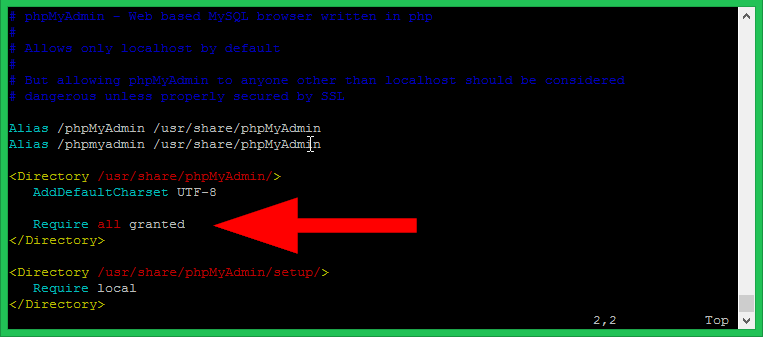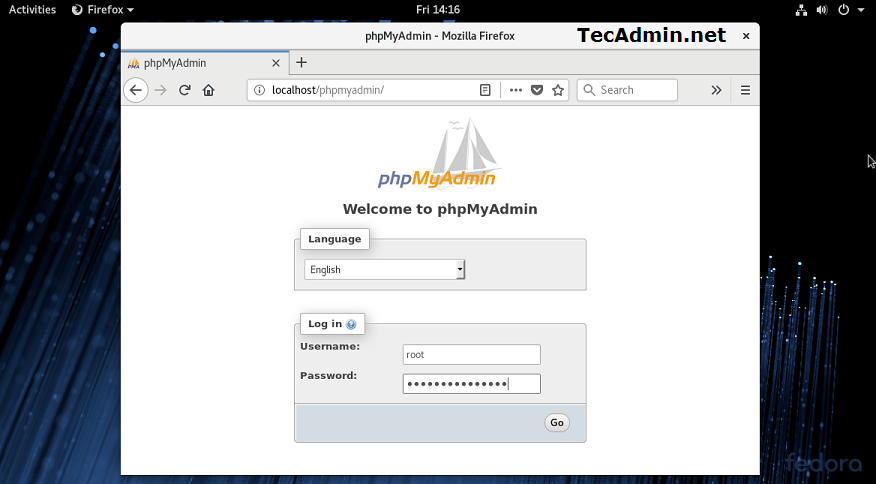It allows you to create a database and users and assign privileges to users. You can create tables in the database and also perform insert, update, and delete operations in table records. This article will help you with how to install phpMyAdmin on Fedora 34/33/32/31/30 systems.
System Requirements
Assuming you already have a LAMP (Apache, MySQL, and PHP) stack installed on your system. Here are the minimum requirements for installing the latest version phpMyAdmin.
Apache >= 2.2 PHP >= 7.1 MySQL/MariaDB >= 5.5
Alternatively, you can use our tutorial to install and configure LAMP stack on Fedora system. Next, you can follow one of the below methods to install phpMyAdmin on a Fedora Linux system.
Method 1: Installing phpMyAdmin on Fedora from Default Repository
The latest Fedora versions default DNF repositories contain the latest version of the phpMyAdmin packages. So we recommend installing phpMyAdmin on Fedora from the default repository. Now, you can get phpMyAdmin access by visiting http://localhost/phpmyadmin URL in a web browser. You will get instructions to allow phpMyAdmin remote access below in this article.
Method 2: Installing phpMyAdmin on Fedora from REMI Repository
In older Fedora versions the default repositories may not have updated versions. In that case, you can use REMI repositories, that contains the latest version of phpMyAdmin.
Allow phpMyAdmin Access to Remote Hosts
If you want to access phpMyAdmin from the remote host. Edit the phpMyAdmin web server configuration file in a text editor: Then replace Require local with Require all granted to allow remote hosts to access phpMyAdmin. Save the changes and restart the HTTPD service to apply. All done.
Access phpMyAdmin in Browser
Now you can access phpMyAdmin in any browser using the following URL. The remote users need to change localhost with the system’s IP address or hostname.
Congratulation’s You have successfully installed phpMyAdmin. Using single phpMyAdmin we can manage multiple MySQL servers by adding multiple remote MySQL server. Use this article to add multiple MySQL hosts in phpMyAdmin.

